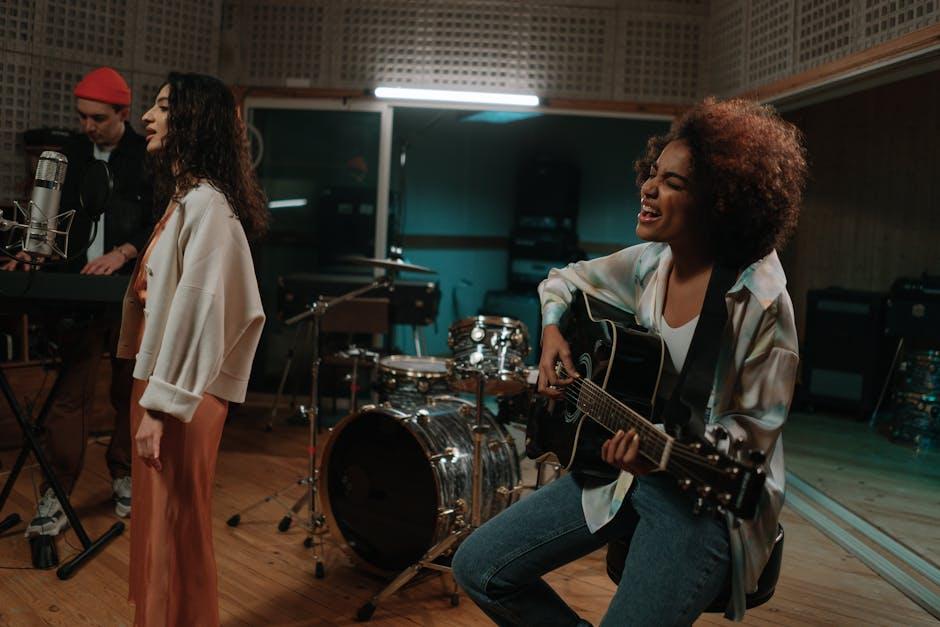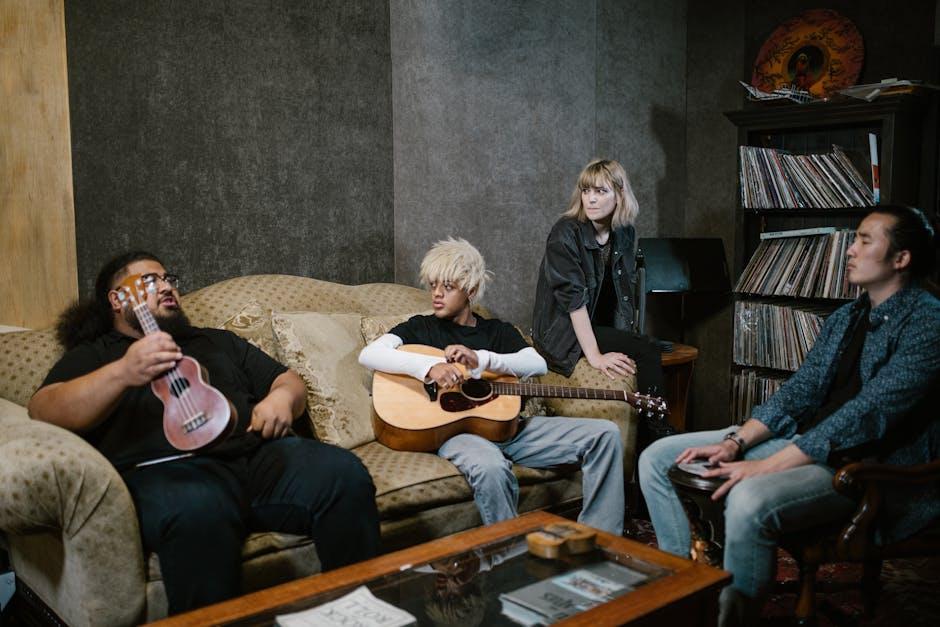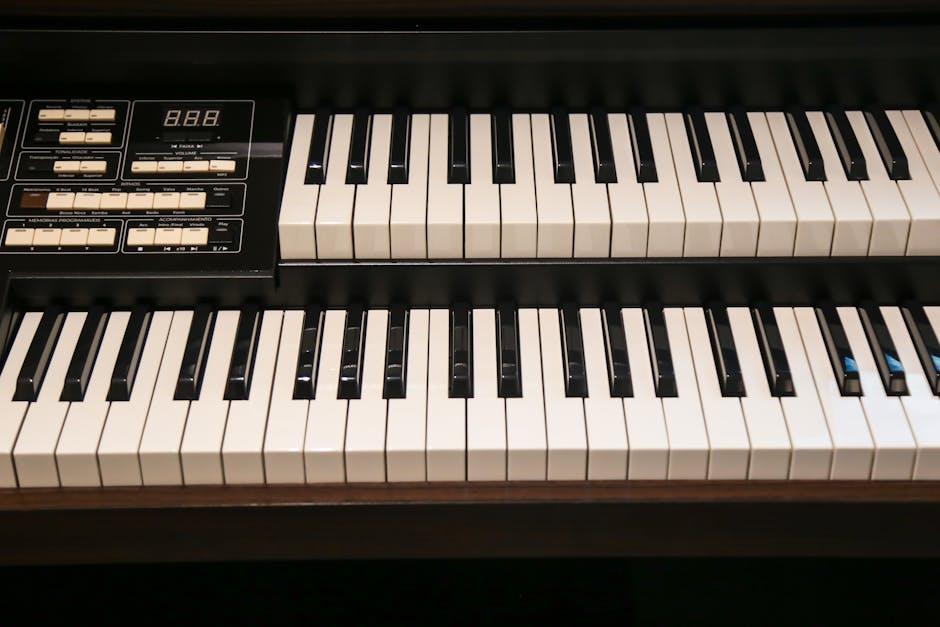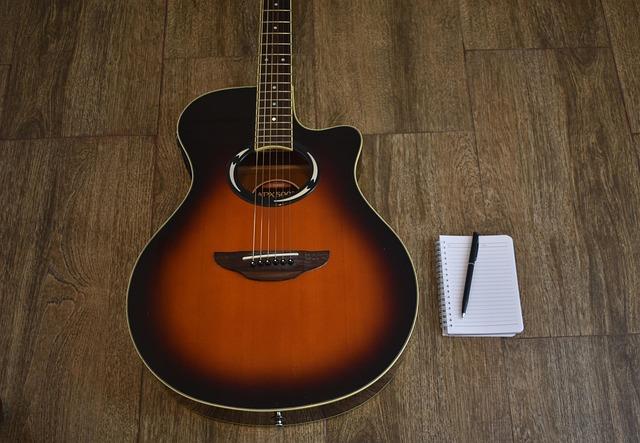Behind every unforgettable melody and poignant lyric lies a story not just of inspiration, but often of challenge. Songwriting, that delicate dance between emotion and expression, can be as elusive as it is exhilarating. In this article, musicians peel back the curtain on the trials they face when crafting their art — from battling creative blocks to wrestling with vulnerability. Through their candid reflections, we gain a deeper understanding of the complex journey behind the songs that move us.
Table of Contents
- Understanding the Emotional Rollercoaster Behind the Lyrics
- Navigating Creative Blocks and Finding New Inspiration
- Balancing Personal Stories with Universal Appeal
- Collaborative Challenges and How They Shape the Song
- Techniques for Turning Vulnerability into Strength
- Practical Tips for Maintaining Consistency in Songwriting
- Q&A
- Future Outlook

Understanding the Emotional Rollercoaster Behind the Lyrics
Songwriting is more than just piecing together melodies and words; it’s a profound journey through the artist’s own emotional landscape. Musicians often describe this process as a cathartic yet draining experience, where every lyric is a reflection of inner turmoil, joy, or uncertainty. The creative struggle lies in balancing vulnerability with the pursuit of relatability—transforming raw feelings into lyrics that resonate universally. Writers uncover hidden layers of their psyche, confronting doubt, fear, and exhilaration simultaneously, often creating in bursts of inspiration that can feel unpredictable and overwhelming.
This emotional odyssey behind each song manifests in various challenges:
- Writer’s block: The silent enemy that stalls the flow of expression.
- Self-criticism: Artists constantly question the authenticity and depth of their work.
- Balance: Struggling to marry personal honesty with audience connection.
- Revisiting painful memories: Rewriting the past to heal or make sense of experiences.
These elements combine to create a creative process that is as unpredictable as it is rewarding, revealing why songwriting can feel like riding an emotional rollercoaster every time an artist sits down with a blank page.

Navigating Creative Blocks and Finding New Inspiration
Every musician encounters moments where the melody just won’t flow and the lyrics seem stuck in a silent loop. These pauses shouldn’t be feared; instead, they can serve as a fertile ground for reflection and growth. Artists often find that stepping away from their usual environment or switching instruments can spark fresh ideas. Embracing imperfection and allowing space for experimentation without judgment is essential. Many musicians also turn to unconventional sources of inspiration, such as literature, visual art, or even conversations with friends, to reignite their creative engines.
Finding new inspiration involves more than just waiting for a muse to strike. It often requires active exploration and intentional practice. Consider these techniques that artists commonly use to break through stagnation:
- Changing tempo or rhythm: Altering the song’s pace can bring a new emotional perspective.
- Collaborative writing: Sharing ideas with others can unlock unknown creative territories.
- Limiting tools: Writing with fewer instruments or simpler arrangements often focuses creativity.
- Journaling thoughts: Freewriting about feelings or experiences ignites authentic lyrical content.
| Strategy | Benefit |
|---|---|
| Nature Walks | Refreshes mind and sparks sensory inspiration |
| Listening to Different Genres | Expands musical horizons and triggers creativity |
| Limiting Time | Pressures focus and reduces overthinking |

Balancing Personal Stories with Universal Appeal
Achieving a perfect balance between personal anecdotes and wider relatability is a common challenge many songwriters face. When musicians dig deep into their own experiences, their songs gain authenticity and emotional depth. However, if these stories are too specific or obscure, they risk alienating listeners who cannot connect with the details. The key lies in weaving universal emotions—like love, loss, hope, or longing—into the personal narrative, allowing the audience to find their own reflection within the artist’s tale.
Many songwriters use mindfulness techniques to transform unique moments into shared experiences. They focus on:
- Evocative imagery that sparks listeners’ imaginations
- Simple, but powerful language that conveys emotion without overcomplicating
- Open-ended stories inviting personal interpretation
- Balancing vulnerability with relatability
Below is a quick look at how artists rate the difficulty of maintaining this balance throughout their songwriting process:
| Artist | Personal Story Focus | Universal Appeal Focus | Balance Difficulty (1-5) |
|---|---|---|---|
| Jordan M. | 4 | 3 | 5 |
| Lena K. | 3 | 4 | 4 |
| Mark D. | 2 | 5 | 3 |

Collaborative Challenges and How They Shape the Song
Collaboration in songwriting often ignites sparks of creativity but can also introduce unexpected complexities. Musicians reveal that balancing diverse perspectives requires patience and an open mind. Conflicting ideas about lyrics, melody, and structure can lead to tension, yet these very challenges push the song into uncharted territories. They emphasize that the struggle to find common ground often results in a richer, more textured composition, blending unique influences that resonate on a deeper level.
Many artists highlight essential strategies that help navigate these collaborative hurdles:
- Active listening: Embracing each other’s input without judgment.
- Flexibility: Willingness to adapt initial concepts when necessary.
- Clear communication: Expressing ideas and concerns transparently.
- Shared vision: Aligning on the emotional core or message of the song.
Below is a snapshot of common collaborative challenges alongside their positive outcomes as cited by various musicians:
| Challenge | Creative Outcome |
|---|---|
| Clashing lyrical themes | Hybrid narratives with emotional depth |
| Disagreement on tempo | Dynamic shifts enhancing song energy |
| Competing melodic ideas | Unexpected hooks and memorable motifs |
| Varied genre influences | Fresh fusion sound that breaks molds |

Techniques for Turning Vulnerability into Strength
Many musicians find that embracing vulnerability in their songwriting is a transformative experience rather than a setback. By allowing themselves to express deeply personal emotions and stories, they unlock a wellspring of authenticity that resonates powerfully with listeners. This openness often results in lyrics that are not only relatable but also cathartic, turning raw feelings into compelling narratives. Some artists use techniques such as free-writing to bypass their inner critic, while others lean on improvisational jamming to uncover the emotional core of a song. These approaches enable their vulnerability to become a compelling creative force.
- Journaling personal experiences to capture honest emotions
- Collaborating with trusted peers to gain new perspectives
- Exploring different musical genres for a fresh emotional outlet
- Using minimalistic arrangements to spotlight lyrics and mood
Songwriters often use vulnerability as a tool to connect and move their audience, yet it requires intentional methods to craft it into strength. The table below highlights some practical ways musicians translate inner struggles into powerful songwriting assets:
| Challenge | Transformative Technique | Impact on Songwriting |
|---|---|---|
| Self-Doubt | Structured Prompts | Focused and clear lyrical themes |
| Overwhelm | Breaking Songs into Sections | Manageable creative process |
| Emotional Overload | Instrumental Expression | Conveys feelings without words |
| Writer’s Block | Changing Environment | Fresh inspiration and energy |

Practical Tips for Maintaining Consistency in Songwriting
Consistency in songwriting often hinges on creating an environment where creativity can flourish without pressure. Many musicians find it helpful to establish a dedicated writing routine, whether that means setting aside time daily or weekly to focus solely on songwriting. This routine helps transform the elusive spark of inspiration into a steady flame. Surrounding yourself with inspiration—be it through listening to diverse music genres, reading poetry, or keeping a journal of spontaneous ideas—can also fuel continuous output. Importantly, embracing imperfection and allowing raw, rough drafts to exist without judgment often prevents the dreaded creative block.
Another practical approach is to break down songwriting into manageable steps, which keeps momentum alive even when motivation dips. Consider using a simple checklist like:
- Generate ideas (themes, phrases, emotions)
- Develop melodies or chord progressions
- Write lyrics or refine them
- Experiment with arrangement
- Record rough demos for feedback
Here’s a quick reference table to help maintain this flow:
| Step | Action | Tip |
|---|---|---|
| Idea Generation | Note down any inspired thought | Keep a voice memo app handy |
| Melody/Chords | Play around with keys | Don’t rely on perfection; experiment |
| Lyrics | Write without editing | Focus on emotion, not grammar |
| Arrangement | Try different instruments | Record to hear what works |
| Demo Recording | Capture rough song versions | Review later with fresh ears |
Q&A
Q&A:
Q: What are some common challenges musicians face when writing songs?
A: Many musicians describe the songwriting process as a tug-of-war between inspiration and frustration. Writer’s block, self-doubt, and perfectionism often block the flow of creativity. Some struggle with finding the right words or melodies that truly capture their emotions, while others wrestle with the pressure to produce hits that satisfy both personal expression and audience expectations.
Q: How do emotions impact the songwriting process?
A: Emotions are both a fuel and a hurdle. Deep feelings provide rich material for storytelling, but they can also cloud judgment and make it harder to objectively shape a song. Artists often reveal that vulnerability is a double-edged sword—while it enhances authenticity, it leaves their work exposed to criticism and self-scrutiny.
Q: Do musicians approach songwriting differently when collaborating versus writing alone?
A: Absolutely. Collaboration often introduces fresh perspectives and sparks new ideas, but it can also lead to creative clashes or compromise. Writing solo allows for complete artistic control but can feel isolating and more challenging without external input. Each approach has unique hurdles and rewards, making the process highly personal.
Q: Are there any strategies musicians use to overcome songwriting blocks?
A: Many musicians develop rituals or habits to coax creativity, such as changing their environment, experimenting with instruments, or freewriting lyrics without judgment. Some embrace pauses, recognizing that forcing a song seldom works, while others draw inspiration from everyday life, personal experiences, or even mundane moments.
Q: How do musicians deal with the pressure of commercial success in songwriting?
A: The tension between artistic integrity and marketability is a recurring struggle. Some musicians fight to keep their authentic voice, fearing that commercial pressures dilute their creativity. Others view commercial demands as a challenge to innovate within constraints. Ultimately, balancing personal expression and audience appeal is an ongoing balancing act.
Q: What role does time play in the songwriting process?
A: Time can be both an ally and an adversary. Some songs emerge in an instant, sparked by a flash of inspiration, while others gestate over months or years. Musicians often need time to refine ideas, revisit drafts, and allow their feelings to evolve. Patience is a key but often difficult virtue in the fast-paced music industry.
Q: How do songwriting struggles influence the final music?
A: Struggles can deepen the emotional resonance and authenticity of a song. Many artists find that the challenges during creation embed layers of meaning and complexity that listeners connect with. In this sense, hardships become a vital part of the artistic process, transforming vulnerabilities into collective experience.
This Q&A distills the nuanced, often complex reflections musicians share about the art—and struggle—of songwriting, offering insight into the delicate dance between inspiration, craft, and expression.
Future Outlook
As the final notes of these heartfelt stories fade, what remains is a profound understanding of the labyrinthine journey behind each song. Songwriting, with all its trials and triumphs, is a deeply personal voyage—one shaped by doubt, persistence, and moments of unexpected clarity. The voices of these musicians remind us that behind every melody lies a struggle not just to create, but to connect. In embracing the challenges, they craft the songs that ultimately resonate, inspiring listeners and fellow creators alike to find meaning in the beautiful complexity of the process.

